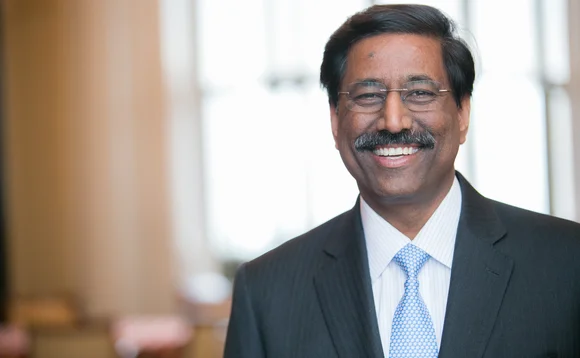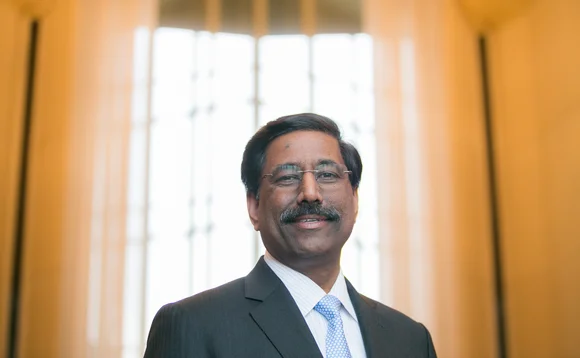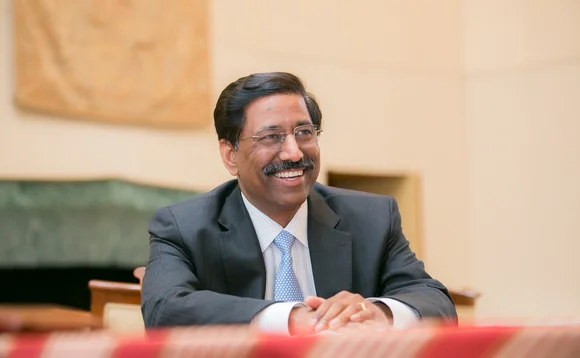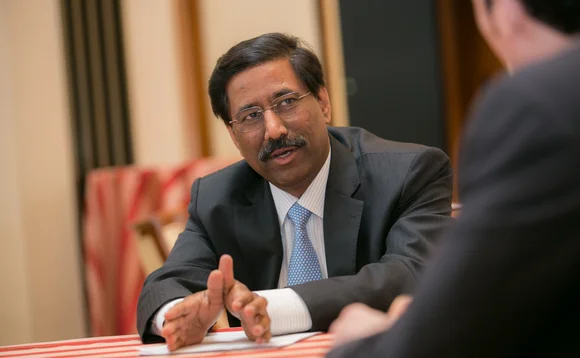Metrics Man: BNY Mellon CIO Suresh Kumar








The most powerful woman in banking doesn’t impress easily, or she wouldn’t be the most powerful woman in banking. But Karen Peetz is impressed by Suresh Kumar. Just look where his career has gone since they began working together at BNY Mellon three years ago.
Peetz earned the “powerful” title from American Banker Magazine in 2011, even before she’d been appointed president of the largest custody bank in the world. Back then, she was still vice chairman in charge of financial markets and treasury services. It was the year she handed Kumar the technology reins to five businesses under her purview—corporate trust, depository receipts, broker-dealer services, treasury services, and collateral management—on top of Pershing, BNY Mellon’s clearing subsidiary, which he already ran. At the time he’d reported to her for only a year.
“He brought fresh eyes to how we were approaching problem-solving: being more client-focused, being more of a partner to the business people, and doing it in a demanding way,” says Peetz. “And I mean that in a good way—he’s the kind of person who doesn’t go away until the business people address his questions.”
Kumar was CIO at Pershing when it came under Peetz’s umbrella in 2010. She came to realize that Pershing was ahead of the rest of the company when it came to innovation, client focus, and approaching technology dynamically. She put Kumar in charge of technology for those additional divisions—comprising over 50 percent of the company—in 2011, and liked what she saw enough that, in April of 2012, he was promoted again, this time to CIO of the entire bank.
Peetz remembers the moment she realized what Kumar was capable of. Her IT team was hammering out a blueprint for a new platform meant to reduce intra-day credit risk in the tri-party repurchase agreement (repo) market, for which BNY Mellon is the largest provider of agent services. The best the team could come up with was a five-year plan that left no one satisfied. Kumar joined, and soon a two-year plan was on the table. “It was brilliant,” Peetz recalls. “Absolutely brilliant. It addressed the risk much more quickly than the five-year plan did and had more elegant features and functions.”
“We pioneered in many ways what you now see as online brokerage. We were the first ones to connect online brokerage to NYSE directly without a Series 7 holder in between, approving each order.”
A Passage From India
The Bank of New York is the oldest bank in the US, having been chartered in 1784, eight years before the New York Stock Exchange. Interestingly, its deep American roots were planted by a man born outside the US, founder Alexander Hamilton, born on the Dutch Caribbean island of Nevis. Perhaps Kumar, raised and educated in India, is not such a fish out of water at one of America’s oldest institutions.
The Indian Institutes of Technology were established in the wake of the country’s independence from British rule in 1947 to produce civil engineers that could fast-track it to the future. Kumar had that career path in mind when he enrolled in the college at Madras, one of the nation’s three best universities. While there, he was drawn to the computer lab, not because of any interest in the refrigerator-sized IBM 360s, but because it was the only room on campus besides the library with air conditioning. Nonetheless, he learned about early computing, but most importantly he learned how to learn, skills he carries with him to this day. After Madras, he earned an MBA from the Indian Institute of Management at Ahmedabad, then moved to the US shortly after graduation in 1984 to pursue his career.
Only users who have a paid subscription or are part of a corporate subscription are able to print or copy content.
To access these options, along with all other subscription benefits, please contact info@waterstechnology.com or view our subscription options here: https://subscriptions.waterstechnology.com/subscribe
You are currently unable to print this content. Please contact info@waterstechnology.com to find out more.
You are currently unable to copy this content. Please contact info@waterstechnology.com to find out more.
Copyright Infopro Digital Limited. All rights reserved.
As outlined in our terms and conditions, https://www.infopro-digital.com/terms-and-conditions/subscriptions/ (point 2.4), printing is limited to a single copy.
If you would like to purchase additional rights please email info@waterstechnology.com
Copyright Infopro Digital Limited. All rights reserved.
You may share this content using our article tools. As outlined in our terms and conditions, https://www.infopro-digital.com/terms-and-conditions/subscriptions/ (clause 2.4), an Authorised User may only make one copy of the materials for their own personal use. You must also comply with the restrictions in clause 2.5.
If you would like to purchase additional rights please email info@waterstechnology.com
More on Emerging Technologies
Google, CME say they’ve proved cloud can support HFT—now what?
After demonstrating in September that ultra-low-latency trading can be facilitated in the cloud, the exchange and tech giant are hoping to see barriers to entry come down, particularly as overnight trading looms.
Waters Wavelength Ep. 342: LexisNexis Risk Solutions’ Sophie Lagouanelle
This week, Sophie Lagouanelle, chief product officer for financial crime compliance at LNRS, joins the podcast to discuss trends in the space moving into 2026.
Citadel Securities, BlackRock, Nasdaq mull tokenized equities’ impact on regulations
An SEC panel of broker-dealers, market-makers and crypto specialists debated the ramifications of a future with tokenized equities.
BlackRock and AccessFintech partner, LSEG collabs with OpenAI, Apex launches Pisces service, and more
The Waters Cooler: CJC launches MDC service, Centreon secures Sixth Street investment, UK bond CT update, and more in this week’s news roundup.
Tokenized assets draw interest, but regulation lags behind
Regulators around the globe are showing increased interest in tokenization, but concretely identifying and implementing guardrails and ground rules for tokenized products has remained slow.
CME, LSEG align on market data licensing in GenAI era
The two major exchanges say they are licensing the use case—not the technology.
Waters Wavelength Ep. 341: Citi’s Pitts and Topa
This week, Citi’s Michele Pitts and Marcello Topa join Wei-Shen to talk about UK and EU T+1.
Robeco tests credit tool built in Bloomberg’s Python platform
This follows the asset manager’s participation in Bloomberg’s Code Crunch hackathon in Singapore, alongside other firms including LGT Investment Bank and university students.






